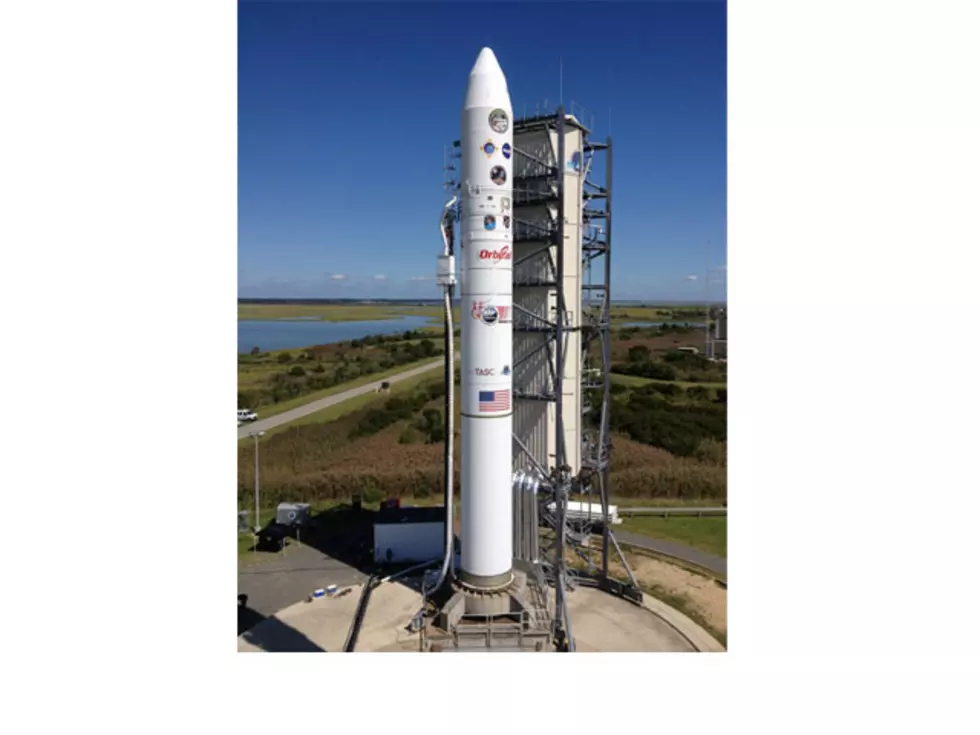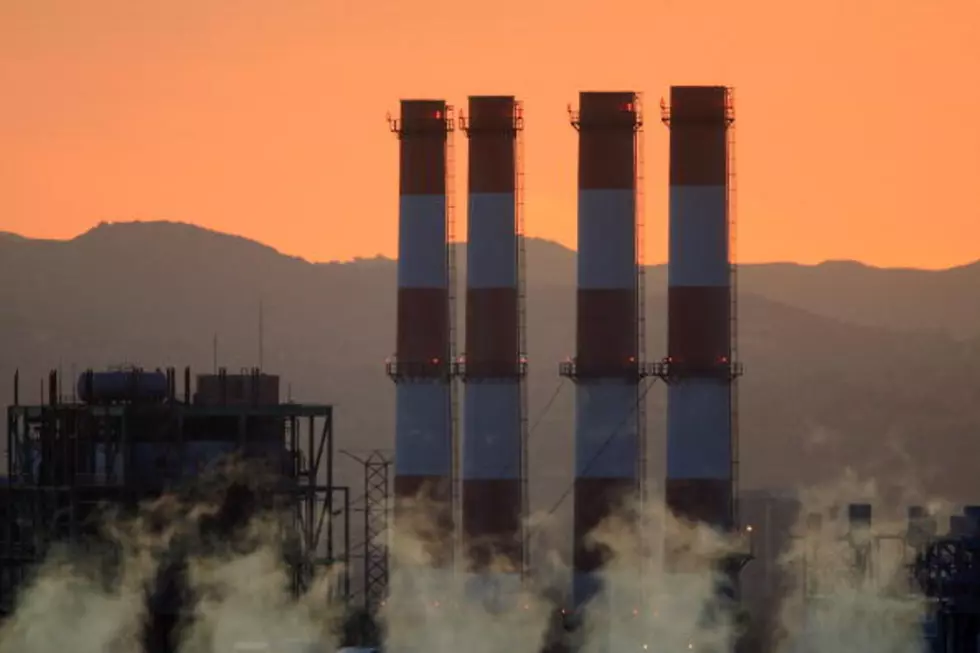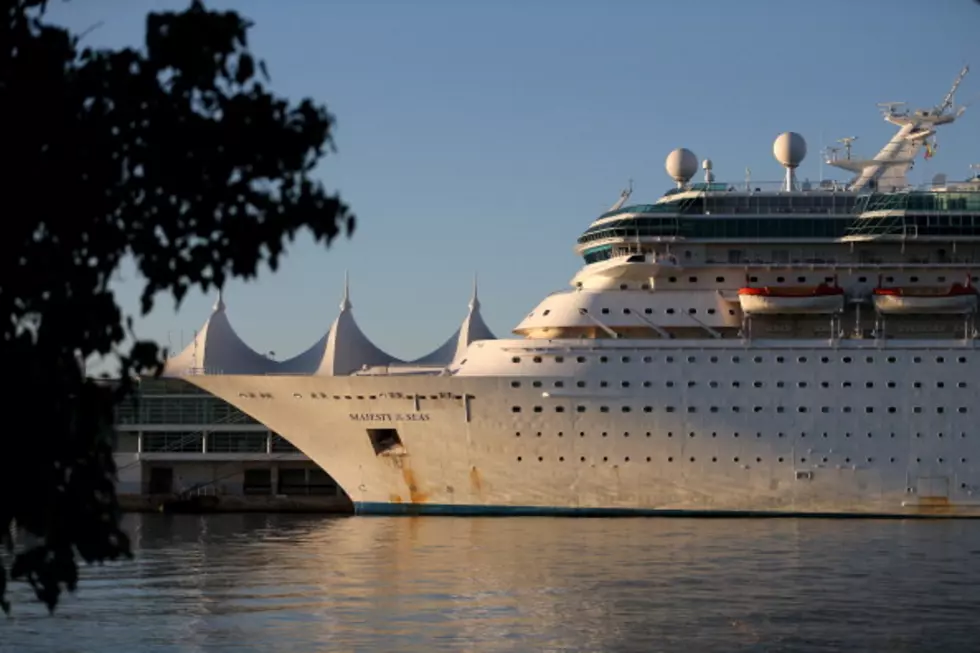
NASA Aiming For Moon Again, This Time From Va.
NASA is headed back to the moon, this time to explore its thin atmosphere and rough dust.
The robotic spacecraft LADEE will fly to the moon by way of Virginia's Eastern Shore.
Liftoff is set for late Friday night from NASA's Wallops Flight Facility.
Weather permitting, the soaring Minotaur rocket should be visible along much of the East Coast — as far south as South Carolina, as far north as Maine and as far west as Pittsburgh.
LADEE — short for Lunar Atmosphere and Dust Environment Explorer — will be the first spacecraft to be launched into outer space from Wallops. And it will be the first moonshot ever from Virginia in 54 years of lunar missions.
The unmanned Minotaur rocket consists of converted intercontinental ballistic missile motors. A peace treaty between the United States and Russia specifies the acceptable launch sites for those missile parts; Wallops is on that short list.
All but one of NASA's approximately 40 moon missions — most memorably the manned Apollo flights of the late 1960s and early 1970s — originated from Cape Canaveral. The most recent were the twin Grail spacecraft launched two years ago this weekend. The lone exception, Clementine, a military-NASA venture, rocketed away from Southern California in 1994.
Scientists involved in the $280 million, moon-orbiting mission want to examine the lunar atmosphere — yes, that's right, the moon's atmosphere.
"Sometimes, people are a little taken aback when we start talking about the lunar atmosphere because, right, we were told in school that the moon doesn't have an atmosphere," said Sarah Noble, NASA program scientist.
"It does. It's just really, really thin."
The atmosphere is so thin and delicate, in fact, that spacecraft landings can disturb it. So now is the time to go, Noble said, before other countries and even private companies start bombarding the moon and fouling up the atmosphere.
Just last week, China announced plans to launch a lunar lander by year's end.
There's evidence Mercury also has a tenuous atmosphere, where, like our moon, the atmospheric molecules are so sparse that they never collide. Some moons of other planets also fall into that category, as do some big asteroids.
Earth's moon is relatively close, and by studying its atmosphere, scientists will learn about similar atmospheres in places farther afield, Noble said.
Scientists also are eager to measure the lunar dust and see whether the abrasive, equipment-clogging particles actually levitate right off the surface. None of the previous moon missions focused exclusively on the atmosphere and dust.
It will take LADEE — the size of a small car coming in under 1,000 pounds — one month to get close enough to the moon to go into lunar orbit, followed by another month to check its three scientific instruments. Then the spacecraft will be maneuvered from 30 miles to 90 miles above the lunar surface, where it will collect data for just over three months.
The mission will last six months and end with a suicide plunge into the moon.
NASA is inviting amateur astronomers to keep an eye out for any meteoric impacts on the moon once LADEE arrives there on Oct. 6. Such information will help scientists understand the effect of impacts on the lunar atmosphere and dust environment.
Hitching a ride on LADEE is an experimental laser communication system designed to handle higher data rates than currently available. NASA hopes to eventually replace its traditional radio systems with laser communications, which uses less power and requires smaller transmitters and receivers, while providing lightning-fast bandwidth.
NASA was hot on the lunar trail when it announced the LADEE mission in 2008. But the effort to return astronauts to the moon was canceled by President Barack Obama in 2010.
The latest target destinations for human explorers: an asteroid, then Mars. The debate continues as to whether the moon is a more practical starting point.
The Air Force Minotaur V rocket was built by Orbital Sciences Corp. The Virginia-based company is scheduled to make its first-ever supply run to the International Space Station in just two weeks, using its own Antares rocket. Wallops will host that launch as well.
(Copyright 2013 The Associated Press. All Rights Reserved)
More From New Jersey 101.5 FM




![U.S. Headed for Domestic Oil Only? [AUDIO]](http://townsquare.media/site/385/files/2014/02/143637418-300x200.jpg?w=980&q=75)



![Debt and No Degree: A New Trend? [AUDIO]](http://townsquare.media/site/385/files/2014/01/10462763565_f7754242d6_b.jpg?w=980&q=75)
